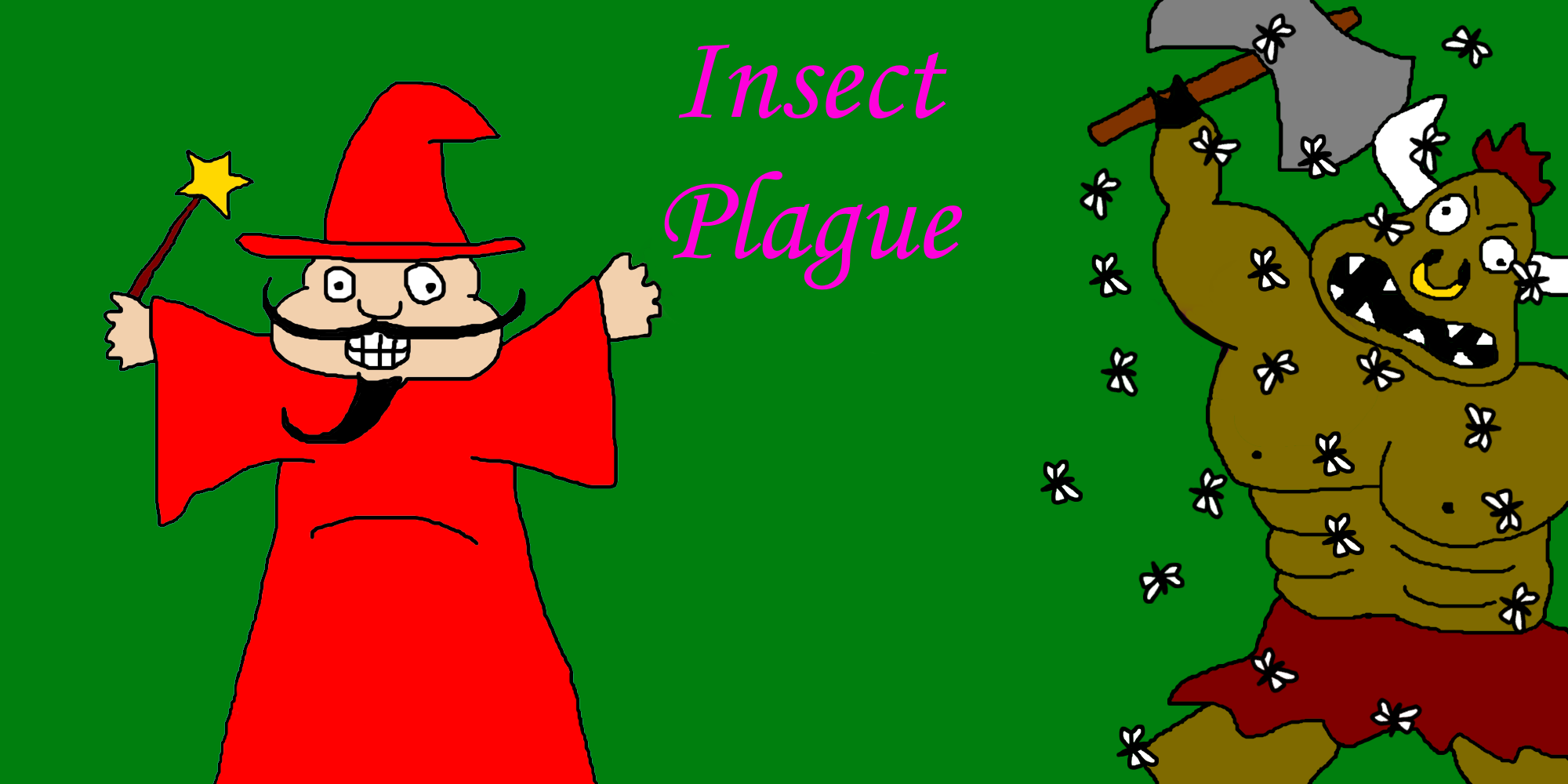Insect Plague: Horde of the Flies
Usable By: Cleric, Druid, Sorcerer
Spell Level: 5
School: Conjuration
Casting Time: 1 action
Range: 300 feet
Duration: Concentration, up to 10 minutes
Components: V, S, M (a few grains of sugar, some kernels of grain, and a smear of fat)
Swarming, biting locusts fill a 20-foot-radius sphere centered on a point you choose within range. The sphere spreads around corners. The sphere remains for the duration, and its area is lightly obscured. The sphere’s area is difficult terrain.
When the area appears, each creature in it must make a Constitution saving throw. A creature takes 4d10 piercing damage on a failed save, or half as much damage on a successful one. A creature must also make this saving throw when it enters the spell’s area for the first time on a turn or ends its turn there.
At Higher Levels. When you cast this spell using a spell slot of 6th level or higher, the damage increases by 1d10 for each slot level above 5th.
Review by Sam West, Twitter:@CrierKobold
Druids were in a bit of rough shape when 5th edition first launched. Their early tier spells were pretty abysmal, had subclass with radical power swings, lacked a lot of definition as to what they were supposed to be great at, and gained most of their power through unintuitive, often conceived as “munchkin” builds relying on abusing specific spells like Conjure Animals. Insect Plague was one of the spells that contributed to that feeling of inadequacy; for damage options, you had long duration repeatable effects like Call Lightning and Flaming Sphere, Blight as a single target damage effect, and that’s about it. Finally, at 9th level, you get an area of effect damaging spell, and its Insect Plague. 4d10 damage in a 20 ft. radius that might hit twice, and if it doesn’t, will absolutely feel like a massive waste of a spell slot. If it does, though, the spell is pretty solid.
The core issue with Insect Plague is in its inflexibility. You’re stuck with a single zone dealing 10-20 damage each turn to any creature within the space, which can be solid. With it applying at the end of turn, not start, though, it basically forces creatures to move. That can be fine, but when compared against Fireball, quickly is revealed to be a less consistent form of dealing usually less damage. Shaping a spell to hit as many creatures as possible often leaves creatures on the edges, making the difficult terrain set up a bit worse. This isn’t an Entangle or Plant Growth style spell you slap down to gum up the battlemap and make creatures waste time getting to you, you want the damage first when casting it. Considering that worsens the instances of duplicate damage, and seeing as creatures don’t want to be taking double instances of damage and already are likely near the edge, their ability to get out of the effect is almost a non-issue for them.
Insect Plague was a solid option for druids of the era if conjuration magic wasn’t your thing. Now, Maelstrom exists, which has a huge cast range, 6d6 damage on cast, a wider radius area, and a consistent pull to help keep creatures taking damage. Wrath of Nature gives you a deeply flavorful and rich fantasy that pulls out 4d6 slashing damage near all trees within range, imposes difficult terrain in a bunch of spaces, offers you a bonus action 3d8 spell attack each turn, and can also restrain creatures every round. Yes, it’s conditional on the environment, but that’s what druids are all about. They want high utility spells that also deal decent damage. Insect Plague was fine before, but even Wall of Fire made it fairly suspect if what you wanted was consistent placement based damage. Now, there’s little reason to consider it when a wealth of other options are better, especially given it asks for your concentration.
Thank you for visiting!
If you’d like to support this ongoing project, you can do so by buying my books, getting some sweet C&C merch, or joining my Patreon.
The text on this page is Open Game Content, and is licensed for public use under the terms of the Open Game License v1.0a.
‘d20 System’ and the ‘d20 System’ logo are trademarks of Wizards of the Coast, Inc.
and are used according to the terms of the d20 System License version 6.0.
A copy of this License can be found at www.wizards.com/d20.



